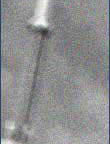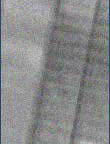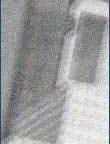 |
 |





















|
Exciting, vibrant and cosmopolitan, Toronto is home to more than 100 cultures, offering exciting festivals and events, friendly neighbourhoods, and a fantastic urban atmosphere!
|
|
Financial capital, cultural centre, ethnically diverse community, Toronto is truly a world within a city.
As the capital of Ontario, Toronto is the seat of government for Canada's most populous province, and in fact is the industrial and business centre for the country.
|
|
Toronto is Canada's largest city, with a population of 2.4 million. (Population of the Greater Toronto Area is 4.4 million.) One-quarter of Canada's population is located within 160 km (100 mi.) of the city; more than 60% of the population of the United States is within a one-hour flight. (The population of Canada is 30 million; the Province of Ontario, 11 million).
|
|
History
|
|
Toronto is the Huron Indian word for meeting place. The area was well used as such for centuries by the First Nations (native American Indians), and later by French traders, thanks to its naturally-protected harbour.
In 1788, the British purchased the land from the Mississauga Indians, and a settlement slowly grew up around the harbour. In 1793, Lieutenant-Colonel John Graves Simcoe established a military garrison and named the town York. (It was renamed Toronto when the city was incorporated in 1834.)
During the War of 1812, the town was twice occupied by the Americans (both times in 1813). By 1834, its citizens, mostly British and Scottish immigrants, numbered close to 10,000. Others, such as Jews from the United States, Russia and Germany, would soon arrive, including some 40,000 Irish fleeing famine in their homeland. Blacks escaping slavery in the USA were next. The seeds of Toronto's current multi-ethnic diversity were already being sown.
|
|
As the population increased, so did the city's infrastructure. The University of Toronto opened its doors in 1843. Growth continued in spite of the Great Fire of 1849 (and a second, in 1904), and included an extensive network of roads, railways, canals, shipping, and telegraph lines.
In 1867, Canada was born, and Toronto became the capital of the newly-created province of Ontario. Between 1908 and 1915, arts and culture flourished as the new nation established its identity, and the Toronto Symphony Orchestra, the Art Gallery of Ontario, and the Royal Ontario Museum were established.
Waves of immigration to Canada continued, and the diversity of immigrants grew, especially after both World Wars. Toronto continued its transformation into a manufacturing and industrial powerhouse, because of its close proximity to natural resources, agricultural land, inexpensive energy, and the nearby markets of the American heartland.
|
|
With the opening of the St. Lawrence Seaway in the 1950s, Toronto became a viable port, and a surge of investment flowed into the city. In 1955, Canada's first subway system was opened by the Toronto Transit Commission.
Since the 1960s, immigration from Europe has slowed, to be replaced by an influx of people from Asia, Latin America, the Caribbean, and Africa. With the opening and subsequent expansion of Lester B. Pearson International Airport (one of three in the city), Toronto became Canada's major gateway and entry point.
In 1998, the downtown core and fine surrounding suburban cities were merged into a single "Toronto". The city is governed by 56 full-time councillors. Some activities are co-ordinated on a regional basis, as Toronto's economic and cultural influence extends throughout the "Golden Horseshoe" of communities wrapping around the western end of Lake Ontario.
|
|
Geography
|
|
Situated on the northern shore of Lake Ontario (the easternmost of the Great Lakes system), Toronto is one of the southernmost cities in Canada (latitude 43 degrees N - the same as northern California; longitude 79 degrees). The lake further effects Toronto's climate, with temperatures that are surprisingly moderate: average daily temperature in July is 25 degrees C (77F); and in January, 0 degrees C (32F). Toronto is 172 m. (566 ft.) above sea level.
|
|
The city has ample greenspace (including High Park, in the west end), and is punctuated by a series of rivers and ravines. Hiking paths extend through this system, as well as along the waterfront (a 20km/12.5 mi. trail), and through the car-free Toronto Islands, which are easily reached by a 10-minute ferry-ride from the mainland.
|
|
The landscape around Toronto is fairly flat, although the Niagara Escarpment runs along the western side of the Greater Toronto area. Rich agricultural districts extend further west of the city, and the Niagara Peninsula, with a maturing wine industry and the incomparable Niagara Falls, is about a 90 minute drive from Toronto's downtown. Ontario's "lake district", with pristine wilderness, starts about 100 km (60 mi.) north and east of the city.
|
|
Economy
|
|
Toronto is Canada's centre of finance, industry and commerce. It is located in the centre of Canada's most populated (and prosperous) province, and in one of North America's most concentrated markets.
Major Industries: Banking and financial services make up the largest industry in Toronto, followed by tourism, manufacturing, and communications.
Financial Services: With close to 200,000 employed in finance, insurance and real estate, Toronto is one of the largest financial centres in North America. Headquarters of three of the 6 major Canadian banks (and executive functions for the others) are located here. Most major trust companies and insurance firms are also based in the city. Toronto is home to the Toronto Stock Exchange, second largest in North America by volume and dollar value traded.
Manufacturing: After Detroit, the Toronto area is the 2nd largest automotive centre in North America, employing some 90,000 people. Other leading industries, based on employment, are food and beverage (40,000), electric/electronic equipment (39,000), and printing and publishing (38,000). Other key sectors in manufacturing include high-tech, and the medical & pharmaceutical industries.
|
|
Communications: Toronto is the centre of Canada's media and publishing activities. Half of the country's major magazines and newspapers are based in Toronto. Daily newspapers are published in English, Chinese, Italian, Spanish and Korean. Of the 150 ethnic publications in Canada, more than 50% are published in Toronto. The city is served by 7 television stations, and 27 radio stations. It is the headquarters for the Canadian Broadcasting Corporation's English-language services.
Toronto is the 3rd largest film and television production centre in North America, after New York and Los Angeles. The industry injects about $1 billion Cnd (in direct and spinoff benefits) into the local economy, and employs about 20,000 people.
Entertainment and The Arts: As the pre-eminent entertainment centre in Canada, Toronto's cultural and entertainment industries are wide-ranging, sophisticated, and leading-edge. Most notably, Toronto is the 3rd largest live theatre centre in the English-speaking world, after London and New York, with a commercial theatre scene that averages 50 different productions a month. More than 7 million tickets to live arts productions are sold each year, which account for $130 million Cnd in revenues. With three separate theatre districts and several spectacularly-restored historic theatres, the scene ranges from Broadway-type megamusicals to fringe theatre festivals. In addition, lovers of symphony, ballet, opera, and live music will find various possibilities.
|
|
Toronto features a downtown neighbourhood called the Entertainment District, which blends theatre, dining, and professional sports. Toronto is home to four professional sports teams - hockey, baseball, football, and basketball.
A range of galleries and exhibition spaces contributes to the city's diverse art scene. The Art Gallery of Ontario is Toronto's largest, home to more than 15,000 paintings, as well as an impressive collection of works by sculptor Henry Moore. The McMichael Canadian Art Collection in nearby Kleinburg highlights the works of the famed Group of Seven painters. There are scores of smaller galleries around the city, many of which focus on particular artists; a number of them specialize in native and Inuit art.
The city's museums are an eclectic group, and include (among others) the Royal Ontario Museum (Canada's largest; history, art and natural sciences); the George R. Gardiner Museum of Ceramic Arts; the Design Exchange; the Bata Shoe Museum Collection; the Ontario Science Centre; the Museum for Textiles; and the Hockey Hall of Fame.
A year-round roster of cultural and ethnic festivals round out Toronto's diverse entertainment scene. Some examples: major festivals devoted to film, jazz, dance, literature, fireworks, and Caribbean culture. The city's vibrant and diverse spirit comes alive at festivities celebrating Canada Day (July 1); Winter Carnival (every February); Gay & Lesbian Pride Day (June); and the Santa Claus Parade (November).
|
|
Fascinating Facts
|
|
Languages Spoken: The top 12 languages spoken in Toronto are English, Cantonese, Italian, Portuguese, Polish, Spanish, French, German, Greek, Tagalog, Punjabi, and Ukranian.
Architecture: The city boasts at least 22 different architectural styles, and includes both historic gems and contemporary landmarks. Styles range from the neo-classic elegance of Union Station and the neo-Gothic campus of the University of Toronto to the modern works of Germany's Ludwig Mies van der Rohe (Toronto Dominion Centre), Canada's Arthur Erickson (Roy Thomson Hall) and Finland's Viljo Revell (Toronto City Hall).
|
|
For the Record Books: Two buildings stand out on the Toronto skyline: the CN Tower and the SkyDome. The Tower ("CN" stands for "Canadian National", one of Canada's founding railway companies) is the tallest building in the world, standing at 553 m (1815'5"). The adjacent SkyDome is a multi-purpose entertainment complex, best known as the world's first stadium with a fully-retractable roof.
Longest Street!: Yonge Street, Toronto's main strip, is the longest street in the world at 1,900 km (1,190 mi.). It stretches from Queens Quay in Toronto to Rainy River, Ontario, near James Bay.
|
|
|
|
|












